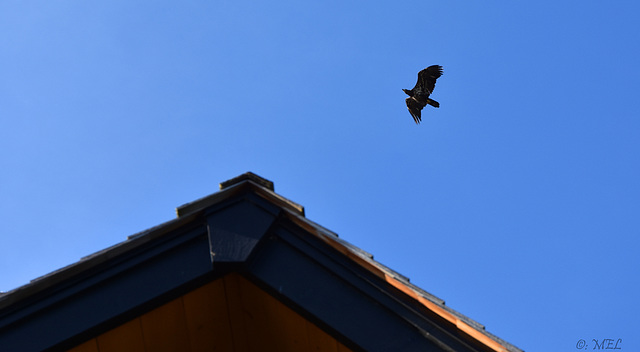Canada Place und Convention Centre
Eden Project - PIP: in den Kuppeln
Lizard Point, Cornwall
Mauerblümchen
Der Zaun und die Treppen zu Tintagel Castle
Coverack Hafen
Cadgwith, Cornwall
Dartmoor, Rundbogenbrücke gegenüber der Clapper Br…
Dartmoor alte Brücke
Dartmoor
Die Bank unter der Brücke im Trebah Garden
Einsames Gehöft?
Bucht von Calvi
Da kommt Sonne ins Haus
Falmouth, please come in
So macht einkaufen Spass
Ich bin dann mal weg ...
Cape Cornwall
Der Zaun in der Mutitjilda-Schlucht
Casares, Andalusien - eines der weißen Dörfer
Badetag ...
Geiranger-Fjord und die 7 Schwestern
Auf dem Weg nach Molde
Und täglich ein Möhrchen ...
Die Bank und der Zaun in Port Alberni
SS Sicamouse in Penticton
Totem in Victoria
Canada Place
Der Zaun am Emerald Lake, Yoho National Park, Cana…
Konferenz der Murmeltiere
Weinberge im Okanangan Valley, BC, Canada - PIP
Lillooet Lake
Bow River/Sea im Banff National Park
Sea Otter in Vancouver Aquarium
Der Zaun in Vancouver Downtown
Lake Louise
Johnson Street Bridge, Victoria
Trebah Garden, Cornwall
Riesenrhabarber in Trebah Gardens, Cornwall
Der beste Cappucino der Welt in Penticton
Der Zaun im Stanley Park, Vancouver
Alles Ebbe
Lands End, Cornwall
Der Zaun im Nirgendwo - eine Strasse durch den N…
Postbridge, Dartmoor
1/500 • f/8.0 • 66.0 mm • ISO 320 •
NIKON CORPORATION NIKON D7200
Location
See also...
Keywords
Authorizations, license
-
Visible by: Everyone -
All rights reserved
-
274 visits
Seeadler über Sechelt


Die Sechelt (engl. Aussprache: „SEA-shelt“) oder Shishalh, (in Sechelt: Shishá7lh) sind eine der kanadischen First Nations in der Provinz British Columbia und zählen kulturell als auch sprachlich wie die eng verwandten Pentlatch (Puntletch oder Puntledge) und die Comox-Gruppen (Comox (K'omoks), Homalco (Xwemalhkwu), Klahoose (ƛohos) und Sliammon (ɬəʔamɛn oder Tla’amin)) zu den Küsten-Salish an. Zur zeit des ersten Kontakts mit den Europäern zählten die Shishalh (Sechelt) schätzungsweise ca. 26.000 Stammesmitglieder.
Die Sechelt (Shíshálh) First Nation, offiziell Sechelt Indian Band genannt, befindet sich heute gegenüber der Ostküste von Vancouver Island auf der östlichen Seite der Strait of Georgia mit dem nach ihnen benannten Ort Sechelt als Verwaltungssitz. Heute (September 2013) zählt sie 1.328 eingetragene Stammesmitglieder, von denen 630 in den eigenen Reservaten leben, 29 in anderen Reservaten sowie die restlichen 669 Stammesmitglieder außerhalb.
The Sechelt or Shishalh people, (in their language spelled Shishá7lh) are an indigenous people of Canada. At the time of the first European contact the Sechelt had a population of close to 26,000.[citation needed] Sechelt women were famous for their beautiful cedar woven baskets, which were made using materials such as cedar tree roots, cannery grass and birch bark.
The Sechelt First Nations settlement included four villages on British Columbia's Sunshine Coast, two in Jervis Inlet, and one each on Pender Harbour and on Sechelt Inlet. As the Europeans settled in the region, the Sechelt people experienced numerous changes. Disease brought over by the Europeans (especially smallpox) became rampant, and resulted in a severe decrease of the Sechelt population at their various traditional settlements.
The language of the Sechelt is called sháshíshálh. "Shashishalhem" is considered the most practical English spelling of this word. Sháshíshálh is part of the Coast Salish language group. As of 2014, the Coastal Corridor Consortium, "an entity made up of board members from First Nations and educational partners to improve aboriginal access to and performance in postsecondary education and training" has created a Sechelt Nation language certificate. Q: Wikipedia
Die Sechelt (Shíshálh) First Nation, offiziell Sechelt Indian Band genannt, befindet sich heute gegenüber der Ostküste von Vancouver Island auf der östlichen Seite der Strait of Georgia mit dem nach ihnen benannten Ort Sechelt als Verwaltungssitz. Heute (September 2013) zählt sie 1.328 eingetragene Stammesmitglieder, von denen 630 in den eigenen Reservaten leben, 29 in anderen Reservaten sowie die restlichen 669 Stammesmitglieder außerhalb.
The Sechelt or Shishalh people, (in their language spelled Shishá7lh) are an indigenous people of Canada. At the time of the first European contact the Sechelt had a population of close to 26,000.[citation needed] Sechelt women were famous for their beautiful cedar woven baskets, which were made using materials such as cedar tree roots, cannery grass and birch bark.
The Sechelt First Nations settlement included four villages on British Columbia's Sunshine Coast, two in Jervis Inlet, and one each on Pender Harbour and on Sechelt Inlet. As the Europeans settled in the region, the Sechelt people experienced numerous changes. Disease brought over by the Europeans (especially smallpox) became rampant, and resulted in a severe decrease of the Sechelt population at their various traditional settlements.
The language of the Sechelt is called sháshíshálh. "Shashishalhem" is considered the most practical English spelling of this word. Sháshíshálh is part of the Coast Salish language group. As of 2014, the Coastal Corridor Consortium, "an entity made up of board members from First Nations and educational partners to improve aboriginal access to and performance in postsecondary education and training" has created a Sechelt Nation language certificate. Q: Wikipedia
Erhard Bernstein has particularly liked this photo
- Keyboard shortcuts:
Jump to top
RSS feed- Latest comments - Subscribe to the comment feeds of this photo
- ipernity © 2007-2024
- Help & Contact
|
Club news
|
About ipernity
|
History |
ipernity Club & Prices |
Guide of good conduct
Donate | Group guidelines | Privacy policy | Terms of use | Statutes | In memoria -
Facebook
Twitter

Sign-in to write a comment.